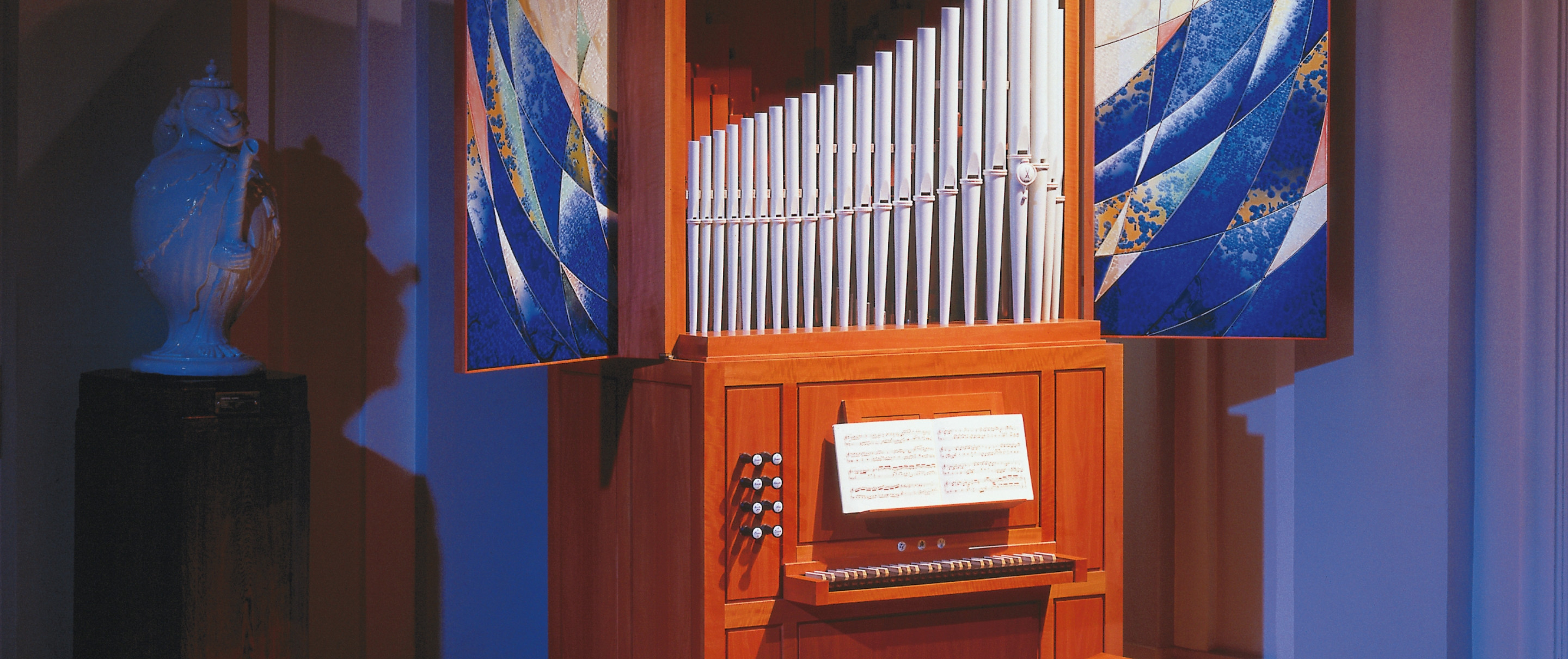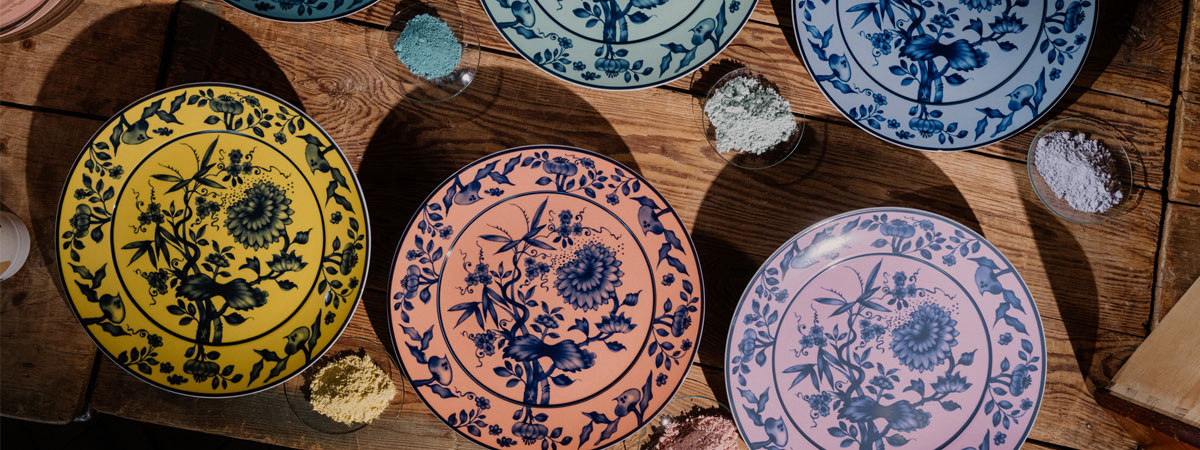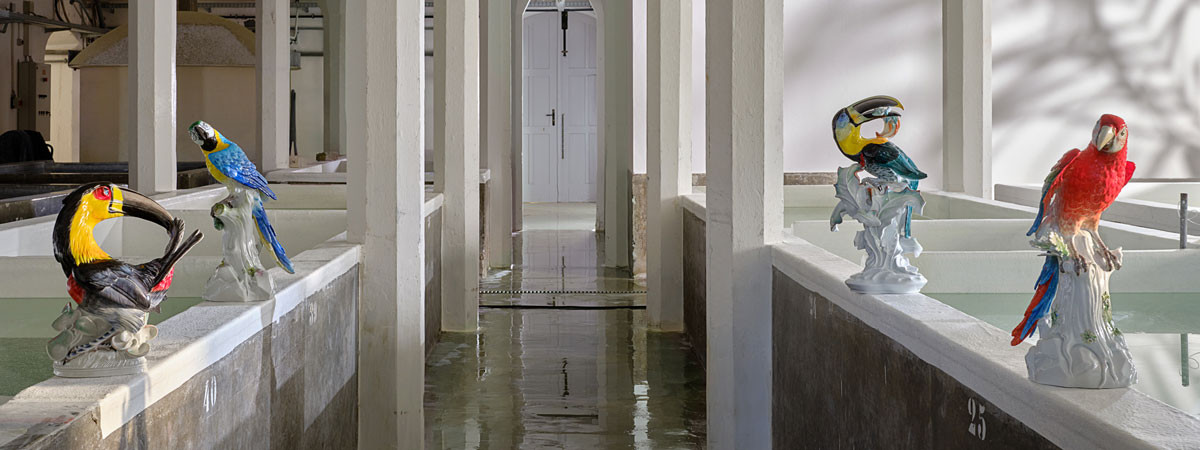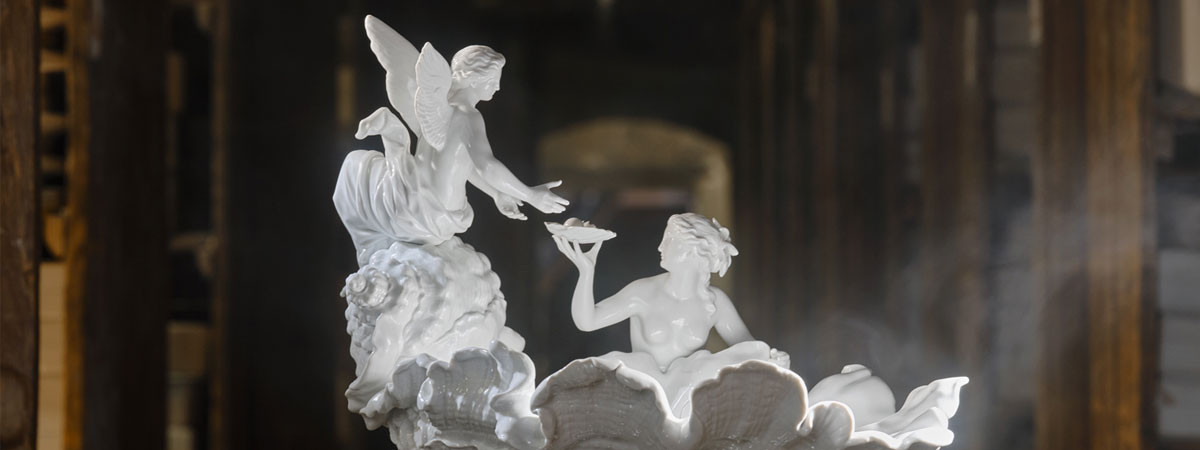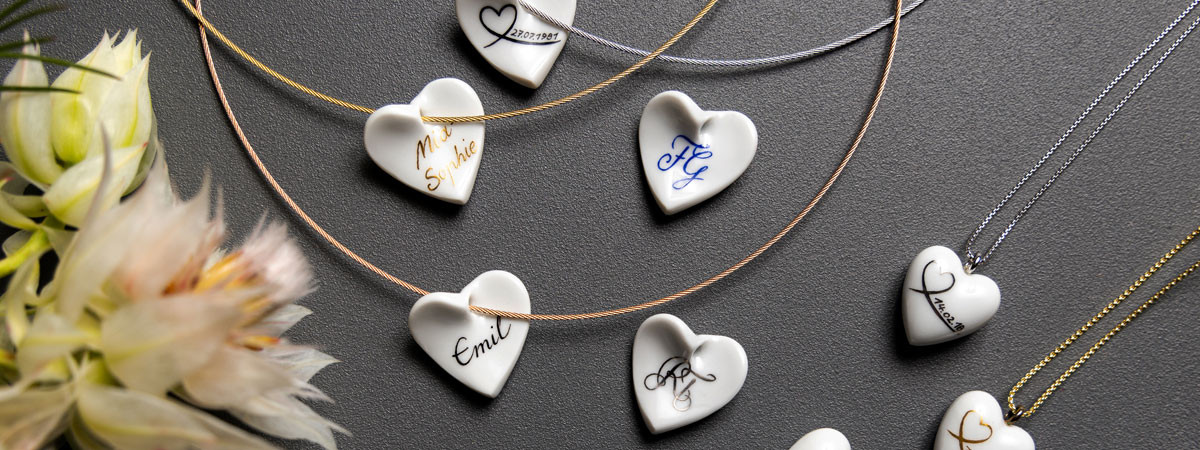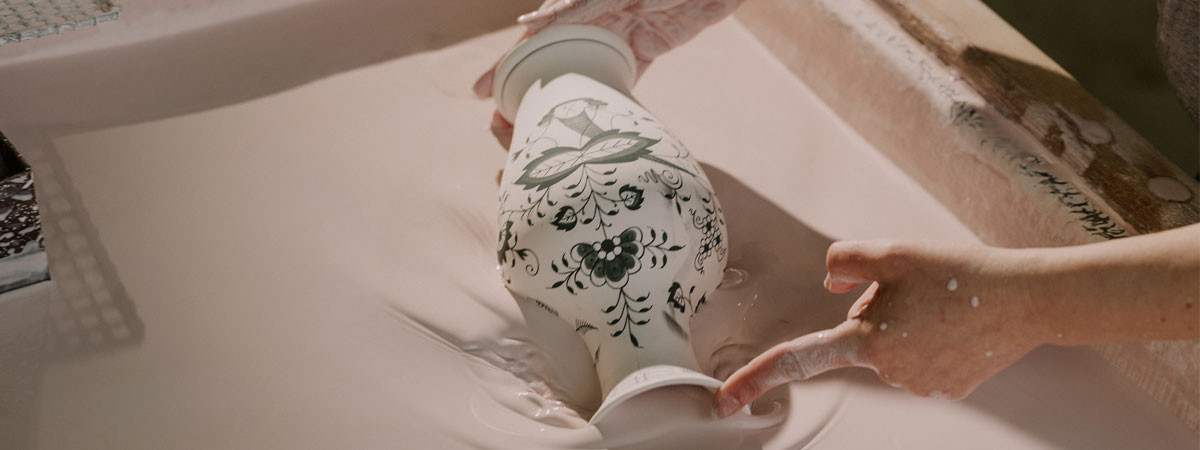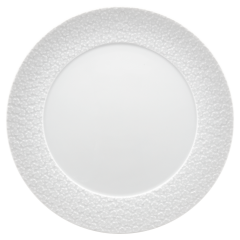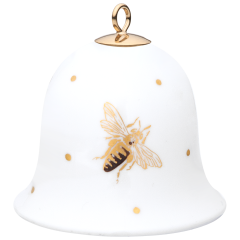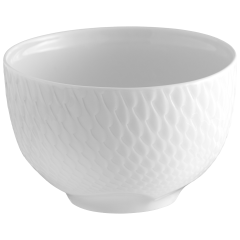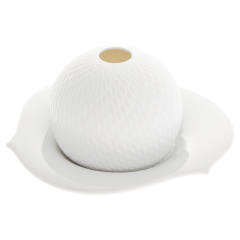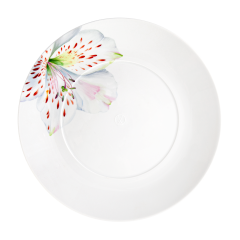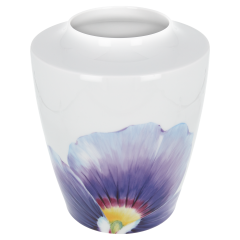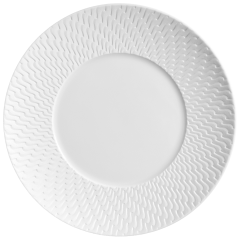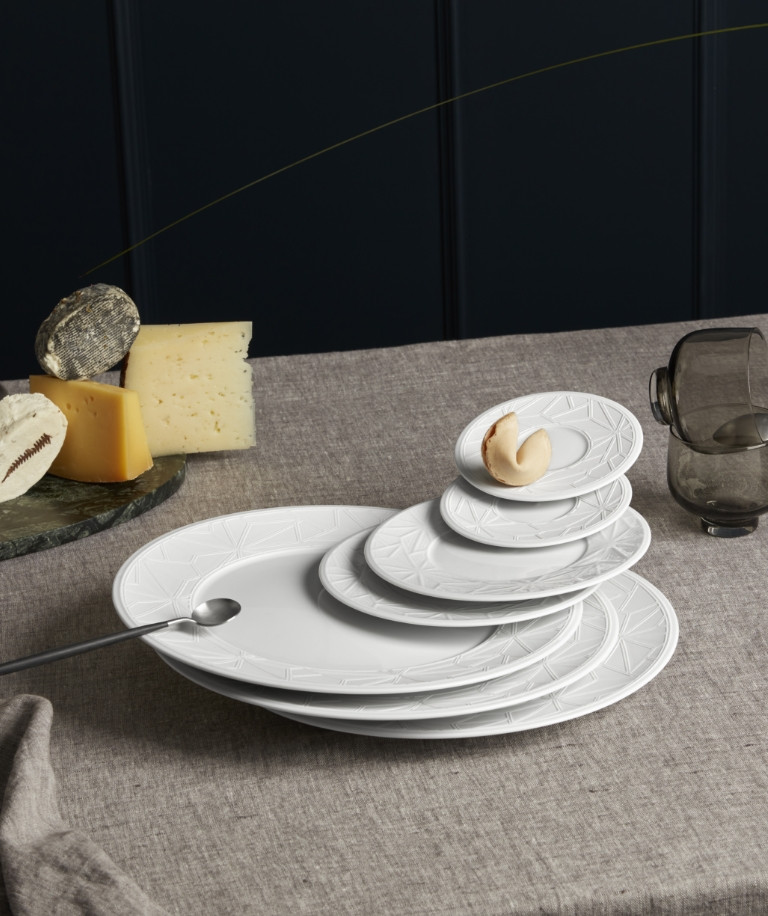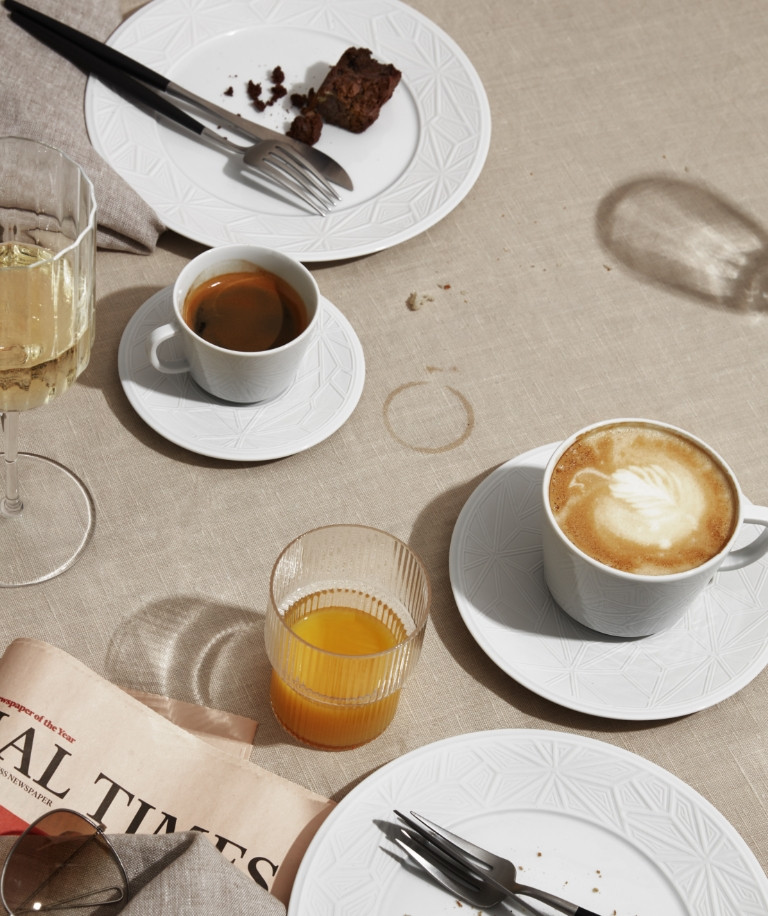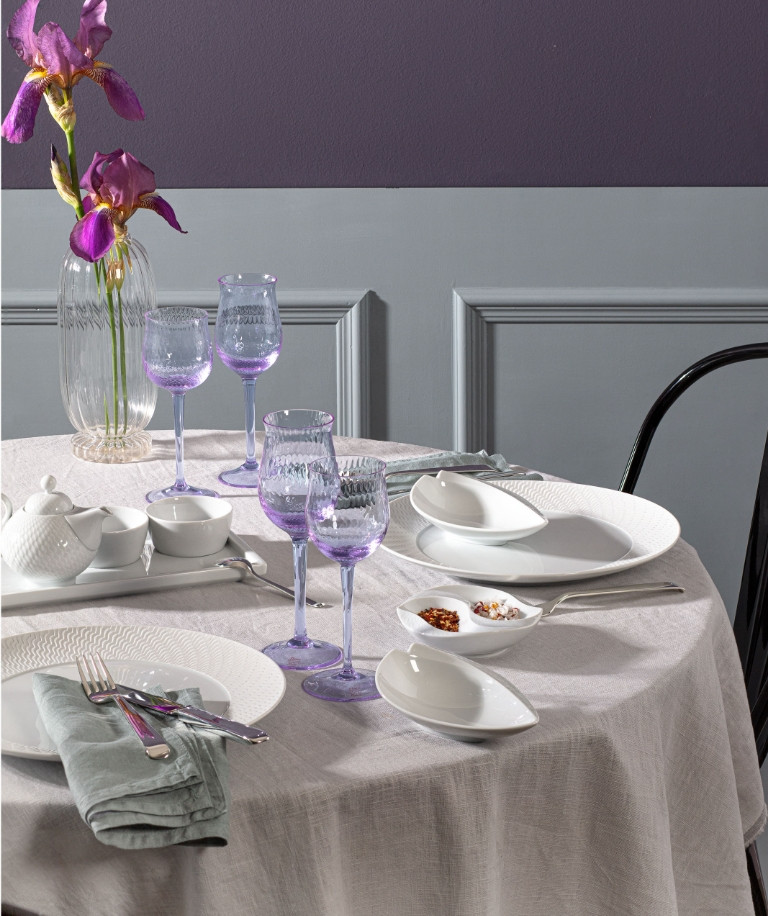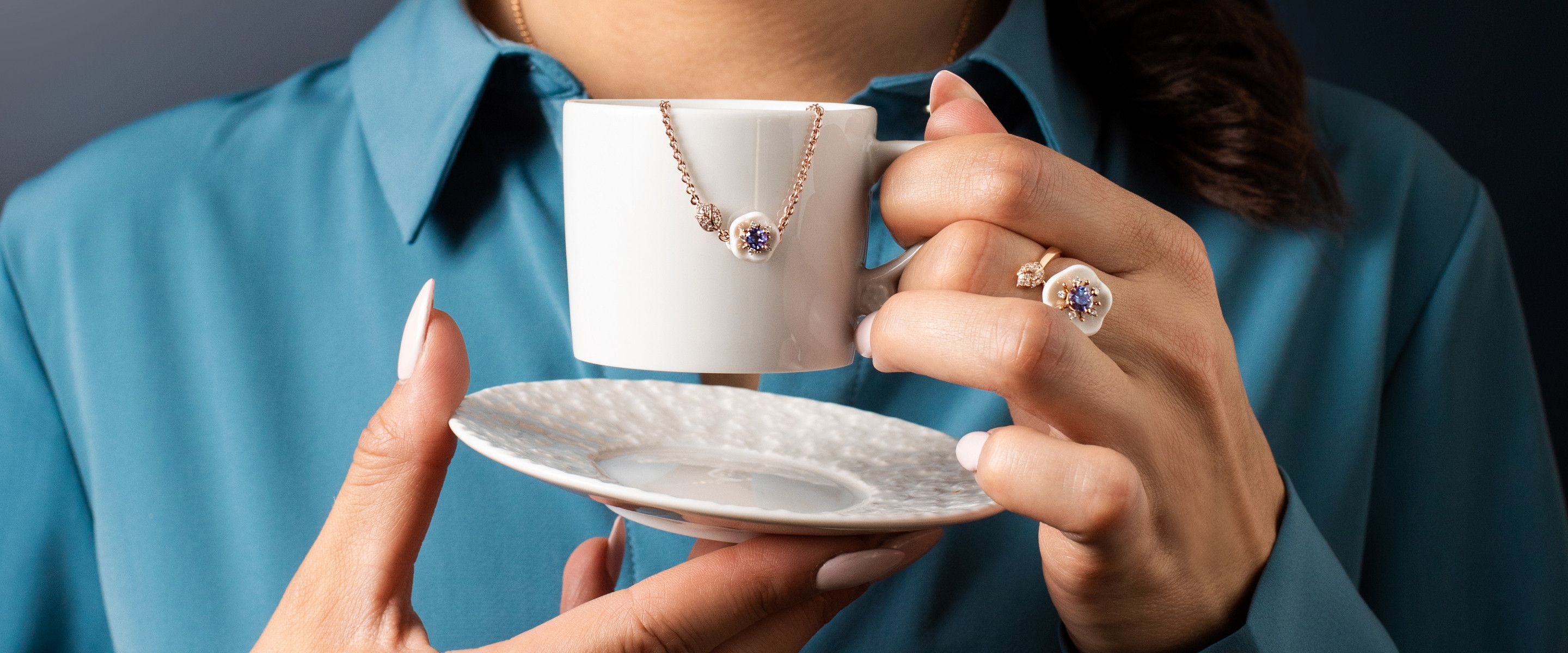
Porcelain - sensuality in extraordinary form
-
 The fascination for the "white gold" has been unbroken for centuries. From the very beginning, porcelain has been perceived with all the senses, whether consciously or unconsciously, making it a true firework of the senses. Did you know that Aristotle already described the five senses over 2300 years ago. However, he was not aware at that time that each sense organ is precisely adapted to its task. Whether eye, ear, nose, skin or tongue - the perceived stimuli in the form of nerve impulses are transmitted to the brain via small current waves. Only then, we feel, hear, smell, taste or see. SeeingThe eye is by far the most important sense organ for us humans. It is estimated that we perceive 70% of all information with this sense. When we look at the various Meissen porcelains, we see a feast for the eyes: the perfect beauty of form, finely created decors and precise painting in a wide variety of colours. We perceive an incomparable craftsmanship that reflects the impressive expertise, dexterity and meticulousness required in the production process. Through our eyes, however, we can also perceive moods that guide us into the appropriate emotional world. For example, with the shimmering of candlelight through one of our storm lights made of white porcelain, the room visibly shines in a cosy warm ambience that can provide relaxation and well-being. FeelingWith the sense of touch, we literally feel our way towards life. Because it is this sense that builds our basic trust as an infant and thus has such a special significance. Porcelain has special characteristics that appeal precisely to this sense of touch and which distinguish it quite essentially from other natural materials. The smooth and closed surface, which the porcelain receives through the sealing process during glazing, is pleasantly supple in the hand and makes touching it a real experience. Due to its property of not conducting heat, it always appears cool and is therefore ideal for serving hot food. You can see the blue Crossed Swords on the back or bottom of your porcelain piece, but you cannot feel them because they are firmly fused to the porcelain due to the underglaze painting. The cobalt blue colour is painted onto the porcelain before the glaze and the glow firing, and during the firing the colour and the porcelain merge to a single unit. The on-glaze painting, on the other hand, which is only painted onto the porcelain after the high-temperature glow firing, can be felt in the porcelain through a slight raised texture. A very special sensory experience is the touch of bisque porcelain. It is unglazed porcelain in its natural origin and has only been polished. That is why the porcelain feels velvet and soft.
The fascination for the "white gold" has been unbroken for centuries. From the very beginning, porcelain has been perceived with all the senses, whether consciously or unconsciously, making it a true firework of the senses. Did you know that Aristotle already described the five senses over 2300 years ago. However, he was not aware at that time that each sense organ is precisely adapted to its task. Whether eye, ear, nose, skin or tongue - the perceived stimuli in the form of nerve impulses are transmitted to the brain via small current waves. Only then, we feel, hear, smell, taste or see. SeeingThe eye is by far the most important sense organ for us humans. It is estimated that we perceive 70% of all information with this sense. When we look at the various Meissen porcelains, we see a feast for the eyes: the perfect beauty of form, finely created decors and precise painting in a wide variety of colours. We perceive an incomparable craftsmanship that reflects the impressive expertise, dexterity and meticulousness required in the production process. Through our eyes, however, we can also perceive moods that guide us into the appropriate emotional world. For example, with the shimmering of candlelight through one of our storm lights made of white porcelain, the room visibly shines in a cosy warm ambience that can provide relaxation and well-being. FeelingWith the sense of touch, we literally feel our way towards life. Because it is this sense that builds our basic trust as an infant and thus has such a special significance. Porcelain has special characteristics that appeal precisely to this sense of touch and which distinguish it quite essentially from other natural materials. The smooth and closed surface, which the porcelain receives through the sealing process during glazing, is pleasantly supple in the hand and makes touching it a real experience. Due to its property of not conducting heat, it always appears cool and is therefore ideal for serving hot food. You can see the blue Crossed Swords on the back or bottom of your porcelain piece, but you cannot feel them because they are firmly fused to the porcelain due to the underglaze painting. The cobalt blue colour is painted onto the porcelain before the glaze and the glow firing, and during the firing the colour and the porcelain merge to a single unit. The on-glaze painting, on the other hand, which is only painted onto the porcelain after the high-temperature glow firing, can be felt in the porcelain through a slight raised texture. A very special sensory experience is the touch of bisque porcelain. It is unglazed porcelain in its natural origin and has only been polished. That is why the porcelain feels velvet and soft.
"MEISSEN is more than porcelain - it is a gift for the senses."
-
 SmellHave you ever consciously smelled porcelain? You will not be able to perceive any smell and that is intentional. Imagine you are sitting at the table and food is served to you, then the first thing that rises to your nose is the smell of the food and awakens first impressions and emotions in you. Human memory is closely linked to scents and smells. A smell can suddenly take you back to a long forgotten situation, such as a childhood meal with your grandparents. For this reason, firing the porcelain closes the surface, making it smell completely neutral. This way you can enjoy the aromas of your food or drink unadulterated for absolute pleasure. ListeningMusic, speech and sounds put us in a variety of moods. For example, when we hear the plates being carried to the table, we already look forward to a delicious meal. But there are also other ways in which we can hear Meissen porcelain. The Church ”Frauenkirche” in the city of Meißen owns the world's first playable carillon made of Meissen porcelain bells since 1929. Several times a day, different chorales ring out in delicate tones over the city, delighting guests and residents alike with their impressive tones. Also unique in the world is the historic Jehmlich organ with 37 pipes made of Meissen porcelain. The white gold gives the organ a very special tone. Melodies from different eras resound from it for an incomparable listening pleasure. TastePorcelain has been specially designed to make sharing a meal a real pleasure. Because when we eat, it is especially important for us to experience our food with all its nuances of taste and that nothing distorts the fine flavours. Glazing and firing during production helps to ensure that the porcelain is resistant, neutral in taste and easy to clean - just as it should be for everyday use. For comparison: if you cut an onion on a wooden board and then wash it off, the food placed on it will most likely still taste a little like onion. Porcelain, on the other hand, does not take on any aromas, so it always tastes particularly good on it. Do you want to experience our Meissen porcelain with all your senses? Then visit our manufactory in Meißen and let us take you on the journey of white gold on one of our exciting tours. During the Saxon winter, Easter, summer and autumn holidays, we offer a guided tour of the senses especially for children, which allows them to experience the production of Meissen porcelain with all their senses.We look forward to your visit to our Meissen World of Experience!
SmellHave you ever consciously smelled porcelain? You will not be able to perceive any smell and that is intentional. Imagine you are sitting at the table and food is served to you, then the first thing that rises to your nose is the smell of the food and awakens first impressions and emotions in you. Human memory is closely linked to scents and smells. A smell can suddenly take you back to a long forgotten situation, such as a childhood meal with your grandparents. For this reason, firing the porcelain closes the surface, making it smell completely neutral. This way you can enjoy the aromas of your food or drink unadulterated for absolute pleasure. ListeningMusic, speech and sounds put us in a variety of moods. For example, when we hear the plates being carried to the table, we already look forward to a delicious meal. But there are also other ways in which we can hear Meissen porcelain. The Church ”Frauenkirche” in the city of Meißen owns the world's first playable carillon made of Meissen porcelain bells since 1929. Several times a day, different chorales ring out in delicate tones over the city, delighting guests and residents alike with their impressive tones. Also unique in the world is the historic Jehmlich organ with 37 pipes made of Meissen porcelain. The white gold gives the organ a very special tone. Melodies from different eras resound from it for an incomparable listening pleasure. TastePorcelain has been specially designed to make sharing a meal a real pleasure. Because when we eat, it is especially important for us to experience our food with all its nuances of taste and that nothing distorts the fine flavours. Glazing and firing during production helps to ensure that the porcelain is resistant, neutral in taste and easy to clean - just as it should be for everyday use. For comparison: if you cut an onion on a wooden board and then wash it off, the food placed on it will most likely still taste a little like onion. Porcelain, on the other hand, does not take on any aromas, so it always tastes particularly good on it. Do you want to experience our Meissen porcelain with all your senses? Then visit our manufactory in Meißen and let us take you on the journey of white gold on one of our exciting tours. During the Saxon winter, Easter, summer and autumn holidays, we offer a guided tour of the senses especially for children, which allows them to experience the production of Meissen porcelain with all their senses.We look forward to your visit to our Meissen World of Experience!
